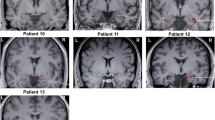Abstract
When humans carry out actions in response to external stimulation, they acquire associations between the stimulus and the action it triggered. Previous research suggests that visuomotor integration and S–R learning is modulated by positive and negative action effects. We present an experiment corroborating this notion. Participants switch between two semantic classification tasks. In one task, correct responses triggered presentation of a positive or negative emotionally arousing picture. When the same target items were later on presented in the other task, performance was more impaired for stimuli previously followed by a positive picture than for stimuli previously followed by a negative picture. This suggests that the association between the stimulus and the task previously performed in response to the stimulus was stronger in the former than in the latter case, resulting in stronger conflict when the stimulus was presented in a new task context. Implications of this result for research on visuomotor integration and S–R learning are discussed.


Similar content being viewed by others
References
Allport A (1987) Selection for action: some behaviorial and neurophysiological considerations of attention and action. In: Heuer H, Sanders AF (eds) Perspectives on perception and action. Lawrence Erlbaum, Hillsdale, pp 395–419
Allport DA, Wylie G (2000) “Task-switching” stimulus-response bindings and negative priming. In: Monsell S, Driver J (eds) Control of cognitive processes: attention and performance XVIII. MIT Press, Cambridge, pp 35–70
Bower GH, Hilgard ER (1975) Theories of learning. Prentice-Hall, Englewood Cliffs
Cohen JD, Dunbar K, McClelland JL (1990) On the control of automatic processes: a parallel distributed processing account of the Stroop effect. Psychol Rev 97:332–361
Colzato LS, van Wouwe NC, Hommel B (2007a) Feature binding and affect: emotional modulation of visuomotor integration. Neuropsychologia 45:440–446
Colzato LS, van Wouwe NC, Hommel B (2007b) Spontaneous eyeblink rate predicts the strength of visuomotor binding. Neuropsychologia 45:2387–2392
Dreisbach G, Goschke T (2004) How positive affect modulates cognitive control: reduced perseveration at the cost of increased distractibility. J Exp Psychol Learn Mem Cogn 30:343–353
Dreisbach G, Muller J, Goschke T, Strobel A, Schulze K, Lesch KP, Brocke B (2005) Dopamine and cognitive control: the influence of spontaneous eyeblink rate and dopamine gene polymorphisms on perseveration and distractibility. Behav Neurosci 119(2):483–490
Frank MJ (2005) Dynamic dopamine modulation in the basal ganglia: a neurocomputational account of cognitive deficits in medicated and nonmedicated Parkinsonism. J Cogn Neurosci 17:51–72
Hommel B (1998) Event files: evidence for automatic integration of stimulus response episodes. Vis Cogn 5:183–216
Hommel B, Pösse B, Waszak F (2000) Contextualization in perception and action. Psychol Belg 40:227–245
Knowlton BJ, Mangels JA, Squire LR (1996) A Neostriatal habit learning system in humans. Science 273:1399–1402
Koch I, Allport A (2006) Cue-based preparation and stimulus-based priming of tasks in task switching. Mem Cogn 34:433–444
Lang PJ, Bradley MM, Cuthberg BN (1998) International affective picture system (IAPS): technical manual and affective ratings. University of Florida Center for Research in Psychophysiology, Gaines-ville, FL
Lhermitte F (1983) Utilisation behaviour and its relation to lesions of the frontal lobes. Brain 106:237–255
Logan GD (1988) Toward an instance theory of automatization. Psychol Rev 95:492–527
Moustafa AA, Cohen MX, Sherman SJ, Frank MJ (2008) A role for dopamine in temporal decision making and reward maximization in parkinsonism. J Neurosci 28:12294–12304
Pösse B, Waszak F, Hommel B (2006) Do stimulus-response bindings survive a task switch? Eur J Cogn Psychol 18:640–651
Reynolds JNJ, Hyland BI, Wickens JR (2001) A cellular mechanism of reward-related learning. Nature 412:67–69
Schuch S, Koch I (2003) The role of response selection for inhibition of task sets in task shifting. J Exp Psychol Human Percept Perform 29:92–105
Schultz W (2002) Getting formal with dopamine and reward. Neuron 36:241–263
Snodgrass JG, Vanderwart M (1980) A standardized set of 260 pictures: norms for name agreement, image agreement, familiarity, and visual complexity. J Exp Psychol Hum Learn Mem 6:174215
Suri RE, Schultz W (1998) Learning of sequential movements by neural network model with dopamine-like reinforcement signal. Exp Brain Res 121:350–354
Taylor JR, Elsworth JD, Lawrence MS, Sladek JR Jr, Roth RH, Redmond DE Jr (1999) Spontaneous blink rates correlate with dopamine levels in the caudate nucleus of MPTP-treated monkeys. Exp Neurol 158:214–220
Thorndike EL (1911) Animal intelligence. Macmillan, New York
Waszak F, Hommel B (2007) The costs and benefits of cross-task priming. Mem Cogn 35(5):1175–1186
Waszak F, Hommel B, Allport A (2003) Task-switching and long-term priming: role of episodic stimulus-task bindings in task-shift costs. Cogn Psychol 46:361–413
Waszak F, Hommel B, Allport A (2004) Semantic generalization of stimulus-task bindings. Psychon Bull Rev 11:1027–1033
Waszak F, Hommel B, Allport A (2005) Interaction of task readiness and automatic retrieval in task switching: negative priming and competitor priming. Mem Cogn 33:595–610
Author information
Authors and Affiliations
Corresponding author
Rights and permissions
About this article
Cite this article
Waszak, F., Pholulamdeth, V. Episodic S–R bindings and emotion: about the influence of positive and negative action effects on stimulus–response associations. Exp Brain Res 194, 489–494 (2009). https://doi.org/10.1007/s00221-009-1745-1
Received:
Accepted:
Published:
Issue Date:
DOI: https://doi.org/10.1007/s00221-009-1745-1




